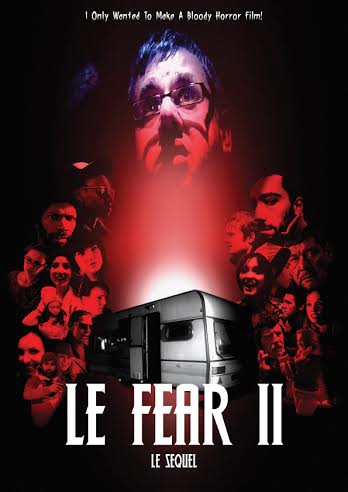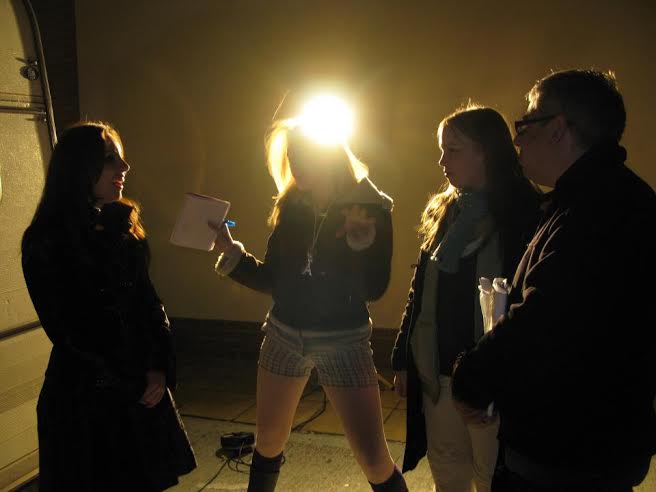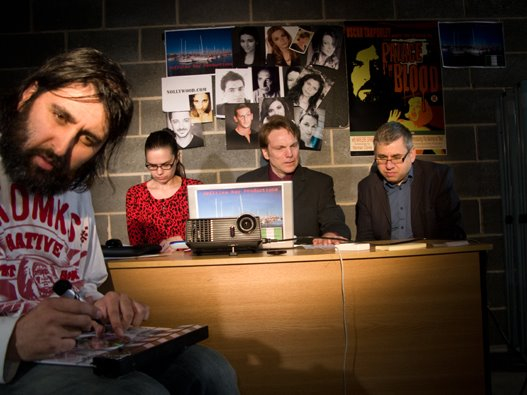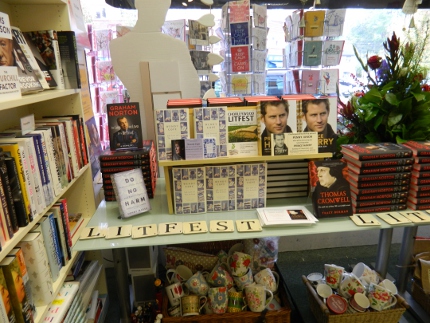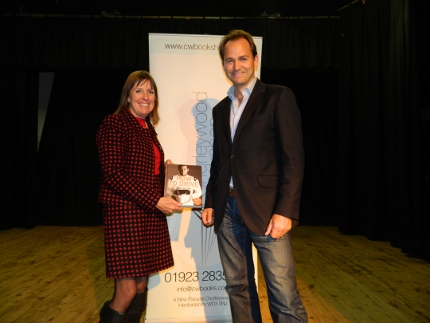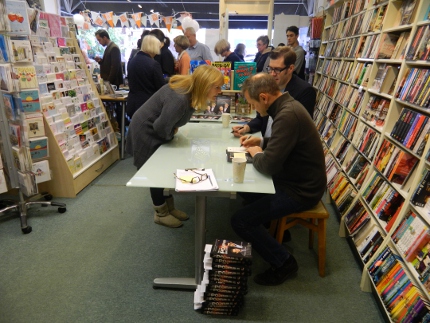What inspired you to make the film?
I had been a screenwriter for many years but, although I had sold screenplays, none had made it to production. I decided if one of my scripts was to be made into a film, I would have to do it. We had no money, but we set about shooting the film with what we had to hand. I felt I was at a ‘now or never’ moment in my life, so I put everything else aside and dedicated myself to one thing – making a feature film.
In fact, many well-known filmmakers have done this. Aronofsky’s first film, Pi, was crowdfunded 10 years before kickstarter become popular. Christopher Nolan shot his first film in London, and the whole production was scaled so that crew, cast and equipment could fit into a London cab. Other filmmakers such as Brits Peter Strickland and Ben Wheatley recently self-funded their first features. In the past, Shane Caruth, Robert Rodriguez and Kevin Smith have launched their careers this way.

Where did the initial idea come from?
It was inspired from what one critic described as a ‘goldmine of ideas’. I had already worked on a script back in 2006-7 using the idea of ‘quantum suicide’. The script had a rave review from the UK Film Council, comparing it to films such as Blade Runner and Memento, but they passed. So I approached the subject again, but in a different way, scaling the story down so I would be able to improvise my way through the production.
Why do you think the Kickstarter campaign was such a success?
For a few different reasons. I spent a lot of time planning and designing the campaign. I also spent hour after our talking to people online, making allies. As I didn’t have a team, I knew I need some friends who believed in what I was doing, and I was lucky enough to find some. Slowly the buzz started to grow, and as the deadline approached, this growing crowd got behind the campaign in a big way and drove it over the line.
Tell us about the film
The film is a surreal psychological sci-fi thriller about a psychotherapist who investigates the mysterious deaths of two patients. It seems to be a film which different people experience it in different ways. If you like films which are intelligent, puzzling, haunting and thought-provoking, you might like Third Contact.
How hard was it to make?
It took 3 years from writing the script, to production, followed by a year of editing, sound design and scoring the music. I had no professional crew and I was operating camera for the first time, as well. The guys I had recording sound were doing that for the first time too. Bit by bit, we worked through the script, shooting as locations became available.
The challenges were many, but I took the ‘one step at a time’ philosophy, meeting each as we needed to. Otherwise the scale of the project would be too overwhelming for me, as writer/director/producer/camera etc, to attempt to solve every problem in one go.
Often, I didn’t know where we would shoot a certain scene, or who would act in it, even while we were halfway through the rest of the project. The strategy was to get all the scenes in one location in the bag, then move onto the next and work out how and where and with who we would do it.
What is the hardest, and easiest thing about directing?
I think, as a director, your task is to have the overall vision of the film, while the team are focusing on the small details. The overall vision will inform the decisions you need to make, down to the smallest detail. But I think every director is different, so each will have a hardest and easiest element. Some directors come from an acting background, so dealing with actors is easiest for them. While others are more technical and are happier playing with the camera and thinking up shots.
For me, I’m not that interested in the technical side of filmmaking, so I reduced that to a minimum and focused on the story I wanted to tell.
What did you shoot it on?
A HDV camcorder (Canon HV30) which is a consumer camera. It is a high quality one, and had a bit of a cult following, which is the reason I decided to use it. At the time, DSLRs, which are popular now, were just out of reach for me, financially. My philosophy was that a camera doesn’t make a great movie. I’d rather watch a great, imaginative story shot on an iPhone, than something more technically proficient but boring to watch.
I didn’t see using a camcorder as an excuse for making a low budget looking. I saw it as an opportunity to explore using a camcorder to shoot a film. I always intended to create my own aesthetic. People are obsessed with this idea of something looking ‘professional’, which to me is a meaningless quality. Picasso used ordinary house paint to create his masterpieces, which I’m sure many painters at the time would have considered ‘unprofessional’.
You only spent £4000. Where did most of the budget go?
The camera cost £600 and the microphone £700. We also spent over £600 on make up fx, as we had to age the main character 30 years, which involved doing a full head cast and creating a prosthetic mask.
How did you keep the budget so low?
By writing a screenplay with minimal number of characters, and locations which were accessible to us. Many of the scenes were shot in my house, or friends’ houses. We had a very small crew and cast who donated their time to making the film. Also, by improvising certain scenes around what we had available to us. We couldn’t afford to be 100% fussy, otherwise the film would have never got made. Again, I didn’t see this as a set back, but more as part of the creative process. Sometimes, things worked better than they would have, because we were forced by budget restrictions into being more imaginative.
Its like the old story of the mechanical shark used during the filming of JAWS. The thing never worked, so they ended up using underwater shark ‘point of view’ shots, looking up at swimmers’ legs dangling into the water – which, of course, is far more terrifying than seeing a rubber shark swimming around.
What’s next?
We will be getting Third Contact into as many cinemas as possible. After that, looking at the next project. I will need to take stock of everything I have learned in the last 5 years of making and marketing this film solo, without any industry backing, and see how I feel about the next step.


